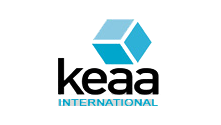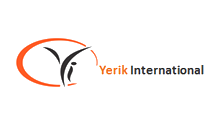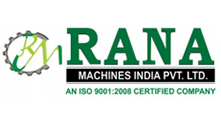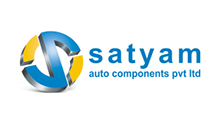 Sales: 84270 07400 Email us: sales@3dwds.in
|
Sales: 84270 07400 Email us: sales@3dwds.in
|  Support: 84270 07401 Email us: support@3dwds.in
Support: 84270 07401 Email us: support@3dwds.in
 Sales: 84270 07400 Email us: sales@3dwds.in
|
Sales: 84270 07400 Email us: sales@3dwds.in
|  Support: 84270 07401 Email us: support@3dwds.in
Support: 84270 07401 Email us: support@3dwds.in
Subject your designs to real world conditions to raise product quality while reducing prototyping and physical testing costs.
SOLIDWORKS® CAM is a 2.5-axis milling and turning solution powered by CAMWorks®. SOLIDWORKS CAM offers 3+2 machining as well as full support for configurations, parts, and assembly machining workflows. The foundation of SOLIDWORKS CAM is rules-based machining, where you can teach the system what standard machining strategies are important to them. These rules can then be automatically applied based on material type and geometry of the feature. Leveraging the SOLIDWORKS part and assembly interface allows you to easily and quickly learn SOLIDWORKS CAM and take advantage of rules-based machining with minimal
SOLIDWORKS CAM Standard lets you quickly program individual milled parts and configurations without leaving the SOLIDWORKS 3D CAD environment. You have full access to defining rules within SOLIDWORKS CAM to create and build to your company standards, as well as Tolerance-Based Machining (TBM).
Buy NowSOLIDWORKS CAM Professional builds on the capabilities of SOLIDWORKS CAM Standard with increased programming capabilities. The additional features include High-Speed Machining (HSM), configurations, assembly machining, turning, and 3+2 programming to drive four- and five-axis machines.
Buy NowSOLIDWORKS CAM Machinist Standard SOLIDWORKS Machinist Standard provides all the functionality found in SOLIDWORKS CAM Standard plus a Part only modeling environment allowing you to work seamlessly with SOLIDWORKS Part files and import several neutral file formats. This connectivity makes easy to work with customers and vendors to collaborate on the manufacturing process..
Buy NowSOLIDWORKS Machinist Professional provides SOLIDWORKS CAM Professional capabilities with SOLIDWORKS Parts and Assemblies to allow the user the ability to import and design fixtures and other manufacturing components used in the machining process. By using Assembly mode in SOLIDWORKS CAM Professional, automatic toolpath clipping can be used to ensure your programs do not collide with custom fixtures or vises.
Buy NowSOLIDWORKS CAM uses rules- based machining to enhance the programming process while leveraging tolerances that were assigned to components. Rules-based machining lets you focus on the critical areas of making a part rather than touching every feature that needs to be machined.
SOLIDWORKS CAM uses rules- based machining to enhance the programming process while leveraging tolerances that were assigned to components. Rules-based machining lets you focus on the critical areas of making a part rather than touching every feature that needs to be machined.
Tolerances and annotations in 3D models are used to automatically create machine programs. TBM automatically adjusts asymmetric tolerances to mean tolerances for cutting tool strategies.
KBM is like have a machinist at your fingertips. Once features are identified by automatic or interactive feature recognition, KBM defines machining strategies and tools to best machine the geometry. Using these rules will automatically allow you to define repeatable machining processes based on your company standards.
Any change made to a design in SOLIDWORKS CAD is automatically updated, applied, and reflected in SOLIDWORKS CAM.
Recognize certain types of geometry (holes, pockets, bosses, and turn–Professional only) not only as CAD features. Automatic feature recognition allows prismatic parts to be identified at a feature level based on machinable shapes.
Automate machine time calculation and compare it to traditional methods for ensuring all aspects of a part are accounted for ahead of time before committing to production.
SOLIDWORKS CAM Professional can employ a machining technique where a three-axis milling program is executed with the cutting tool locked in a tilted position using the five-axis machine's two rotational axes.
SOLIDWORKS CAM Professional HSM using VoluMill technology maintains constant tool pressure throughout the cutting process. The variable feed rate allows the tool to cut at full depth to shorten cycle times while extending machine and tool life. This best-in- class machining routine works with standard cutting tools to lower overhead cost when machining components.
SOLIDWORKS CAM Professional has turning capabilities that include face rough and finish, rough and finish turn, groove rough and finish, rough and finish bore, cut-off, ID and OD threading, and drill, and tap on center.
Part modeling and import is the foundation of programming in a digital world. Creating and importing parts allows the user the ability to communicate with designers, read MBD data and make necessary manufacturing adjustments. Because it is SOLIDWORKS, it is easy to use and learn.
Assemblies take our components to the next level by allowing us to check fits and tolerances plus explain to manufacturers how we want to build our products. By using assemblies for manufacturing, we can import clamps and vises to make sure our parts are made the first time correctly and provide the necessary clearances to be able to remove the finished product when it completed.











































Our solutions enable you and your team to quickly transform new ideas into great products.
Ready To Buy Request for Demo Whatsapp Free Trial Call Us Email Us
Sales: 8427007400 / Email: sales@3dwds.in
Support: 8427007401 / Email: support@3dwds.in
Punjab, Ambala, Delhi, Jammu & Kashmir, Himachal Pradesh
SCF 26, Phase 2, Urban Estate,
Focal Point, Ludhiana - 141010, (Punjab) India